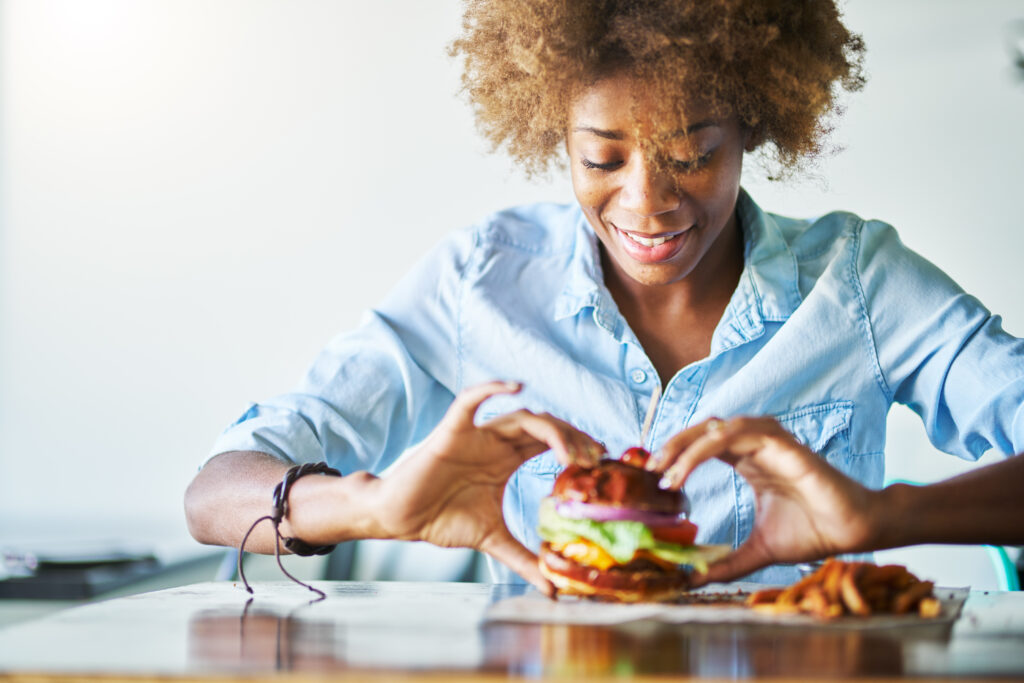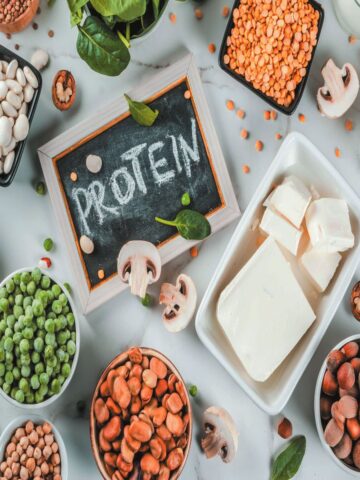
Lose weight without feeling hungry by getting back in touch with your body’s signals. Here are 3 hunger-busting strategies that you can use so you can lose weight and still feel satisfied (and happy)!
1. Don’t go too long without eating.
Perhaps you ignore the beginning signs of hunger because you are busy hustling and bustling from one errand to another, or maybe you don’t experience the signals clearly because you are distracted with back-to-back meetings at work or rushed carpool rides with the kids. Or, you may think you’ll lose more weight if you skip meals. (Sooooo not true! When you finally begin eating, you’re ravenous, and that often leads to a loss of control and overeating.)
To keep appetite in check, set an eating schedule and try to stick to that schedule every day. Keep track of the times that you eat each snack or food. See how closely you are following your eating schedule no matter what method
of tracking you are using. Following your schedule should help to keep hunger in check.
2. Tune in to your body’s natural hunger signals.
You were born knowing what hunger felt like. As a baby, you cried when you were hungry and drank just until you were full. But now, you may not always clearly recognize hunger symptoms, such as a growling stomach or “light-headedness” (the latter means you’ve really waited too long to eat). Why? It could be that you eat too often and never let yourself get even a little bit hungry. Perhaps because you’re an emotional eater or your workdays are filled with edible temptations, like the office candy jar or one client meal after the next. Another possible culprit: too little sleep, which can mess with appetite and fullness hormones so you overeat. The end result: You rarely experience actual hunger signals. Take a peek at this hunger scale.

Before you begin eating, rate your hunger level using the scale above. When you’re finished eating, record
your hunger level again.
When to start eating:
Aim to eat when you’re at a level “2.” At this stage, your body is signaling that it needs fuel. You don’t want to wait much longer because you’re more likely to overdo it when you reach a “1.”
When to stop eating:
Try to pause throughout the meal to gauge your hunger level so you can stop eating before you get too full. Once you hit a “4,” put down your fork. At this level, you’re comfortably full, but not stuffed.
3. Eat more appetite quelling foods

While there’s nothing wrong with those little O’s you’ve been eating since you were a kid, calorie for calorie, a bowl won’t keep hunger in check as long as the oats. That’s because steel cut oatmeal is what nutrition experts call a “high-satiety” food, meaning it tends to keep you feeling “satiated”—satisfied and hunger-free—for longer than if you’d eaten the same amount of calories of most other foods. Satiating is different from filling. You might feel full after eating a bunch of cookies, but an hour later, you’re hungry again. The cookies just aren’t able to sustain that full feeling for very long.
Foods with Staying Power
Complex Carbs: The bigger and more intact the grain (brown rice versus whole wheat flour), the more satiating it is. These carbs take longer to digest, slowing and shortening the rise in blood sugar. Barley, oats, whole wheat, rye, brown rice, corn and other whole grains are more satiating than refined white flour and sugary foods. The fiber in whole grains expands in your gut, which makes you feel fuller.
Legumes: Black, white, kidney and other beans—as well as lentils—are high in fiber and protein, making them super-satiating carbs.
Fruit: All fruits offer a two-for-one benefit: They’re high in fiber and low in calories, so enjoy!
Veggies: Because vegetables help fill you up and cost you few calories, you can—and should—pile them on. Just don’t fry them or drench them in fatty sauces.
Protein: Keep calories in check with this most fulfilling macro-nutrient.
Fats: Adding a little fat to the meal increases satisfaction. The healthiest types: avocado, olive oil, nuts, and seeds. Almonds, peanuts, walnut, and other nuts have been shown to be particularly satiating.
Hunger does NOT have to be an unavoidable side effect of dieting? There should be only one time you truly feel hungry and that’s right before you’re ready to eat a meal or snack.
Found this article helpful? See A Stress-Free Guide to Stocking Your Vegan Pantry
If you haven’t already, join the Facebook Family!





Chime in--Join the Discussion!